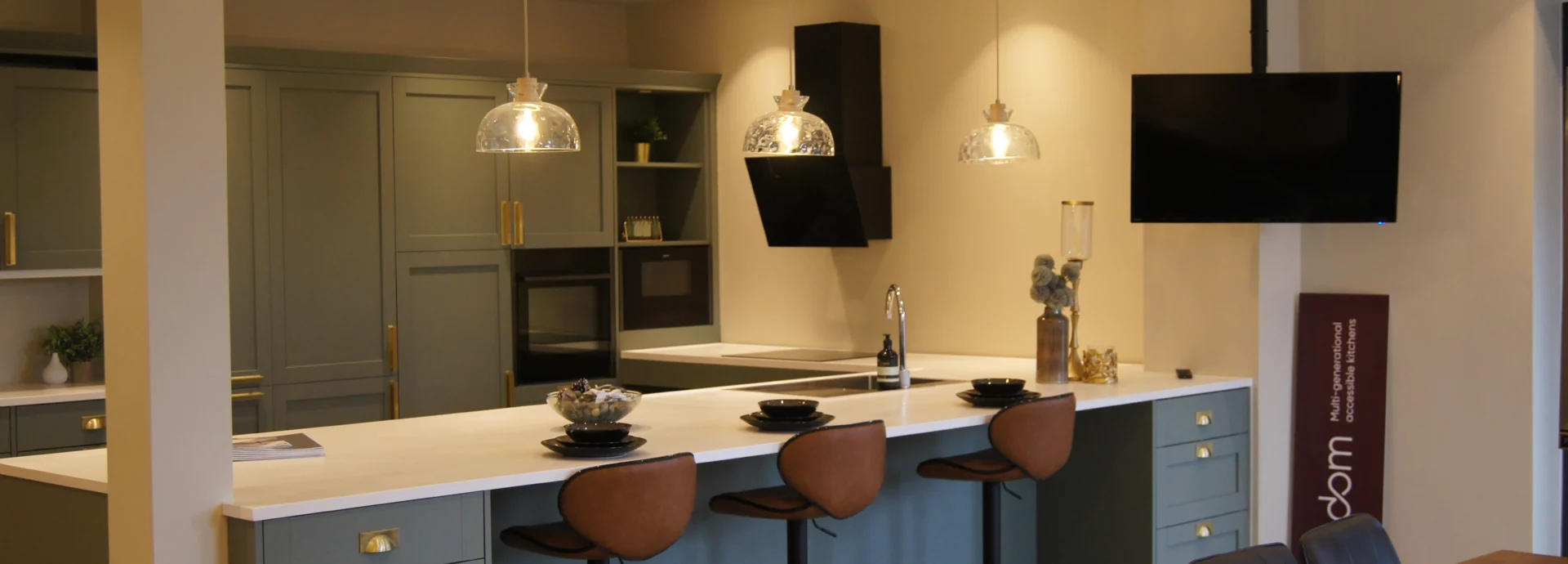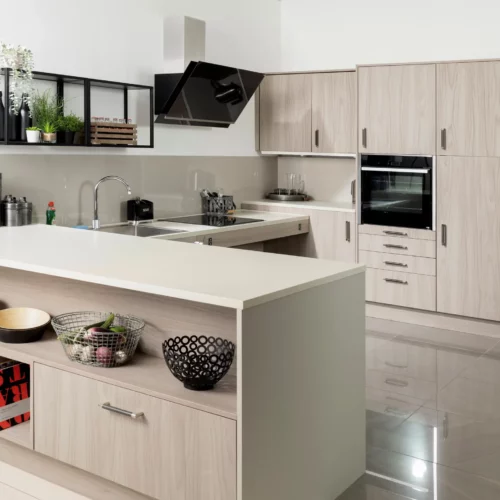Why Accessibility Matters in Kitchen Design
Creating an accessible kitchen is not just about meeting basic functional needs—it’s about ensuring independence, safety, and enjoyment for all users. Whether designing for an elderly family member, someone with mobility limitations, or simply future-proofing a home, investing in an accessible kitchen layout enhances usability and quality of life.
Symphony’s Freedom range is designed with these principles in mind, offering stylish, adaptable, and practical solutions for modern living. By addressing common accessibility challenges, these kitchens help make cooking and meal preparation a comfortable and enjoyable experience for everyone.
1. Difficulty Reaching High Storage Areas
Many kitchen designs feature wall-mounted cabinets and high shelves that are difficult or impossible to reach for wheelchair users or individuals with limited mobility. This can lead to frustration and, in some cases, even safety hazards when people try to stretch or climb to access items.
The Freedom collection includes easy-reach wall cabinet pull-down baskets, an innovative solution that brings stored items down to a more accessible level. With this feature, users no longer need to overreach or use step stools, making high storage areas both practical and safe.

2. Inadequate Countertop Heights
Standard kitchen countertops are typically set at a fixed height, which may not be suitable for all users. Wheelchair users, in particular, may struggle with work surfaces that are too high, while some individuals may find bending over painful and uncomfortable.
The Freedom range offers height-adjustable worktops that can be easily modified at the push of a button. This allows users to set the countertop to a comfortable level, making food preparation easier and reducing strain on the body. This feature also makes the kitchen more adaptable for multi-generational households with varying needs.

3. Limited Access to Corner Storage
Corner cupboards can be tricky to use, as they often require bending and reaching deep into the unit to retrieve items. For individuals with limited mobility, this can render large sections of kitchen storage practically unusable.
Symphony’s pull-out corner storage solutions make these areas fully accessible. With smoothly gliding shelves that extend outward, users can easily reach everything stored within, eliminating the need to twist, bend, or stretch.
4. Unsafe Appliance Placement
Appliance placement is a key factor in kitchen accessibility, yet many traditional designs place ovens, microwaves, and dishwashers too high or too low for easy access. This can create significant difficulties and even increase the risk of accidents, such as burns or spills when handling hot food.
The Freedom range incorporates ergonomic appliance positioning, ensuring that ovens, microwaves, and other key appliances are placed at comfortable heights. With accessible oven housings, users can safely insert and remove food without excessive bending or stretching, improving both safety and convenience in the kitchen.

5. Insufficient Manoeuvring Space
A well-designed accessible kitchen must provide enough space for easy navigation, particularly for wheelchair users. Narrow aisles and cramped layouts can make movement difficult, increasing the risk of injury and limiting independence.
The Freedom range prioritises spacious layouts with carefully considered unit placement to create a kitchen that is easy to move around. Wide walkways and strategically positioned appliances help ensure that everyone can navigate the space comfortably, whether they are using a wheelchair, walker, or simply require extra room to move safely.
Conclusion
Incorporating these solutions not only addresses common accessibility challenges but also enhances the overall functionality and aesthetic appeal of the kitchen. Symphony’s Freedom range exemplifies how thoughtful design and innovative features can create inclusive spaces that cater to the needs of multi-generational households and individuals with varying abilities.
Are you looking for more ways to incorporate accessibility in your kitchen? Get in touch with our team for a chat and some friendly advice!


